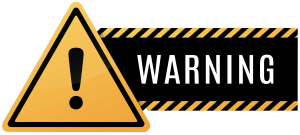Heed the Warnings: Surfside Condo and Pittsburgh Bridge
 On June 24, 2021, at approximately 1:22 a.m., a 12-story beachfront condominium in the Miami suburb of Surfside, Florida, partially collapsed, killing 98 people and injuring 11.
On June 24, 2021, at approximately 1:22 a.m., a 12-story beachfront condominium in the Miami suburb of Surfside, Florida, partially collapsed, killing 98 people and injuring 11.
The main contributing factor was identified as long-term degradation of concrete structural support in the ground-level parking garage under the housing units, due to water penetration and corrosion of the reinforcing steel. The problems had been reported in 2018 and noted as "much worse" in April 2021. A $15 million program of remedial works had been approved before the collapse, although no main structural work had been undertaken.On Friday, Jan. 28, 2022, at approximately 6:40 a.m., the Fern Hollow Bridge – which carried roughly 14,000 vehicles a day, connecting major areas of Pittsburgh, Pennsylvania – collapsed about 100 feet into a ravine. Miraculously, no one was killed but about 10 people received injuries. The bridge had received “poor” ratings for the past 10 years from inspectors, and was included in plans to be rehabilitated, but not for another five to seven years.As the shock wears off, the impact on victims and families processed, and the physical work of cleanup and reclamation begins, next come the questions about liability and who is responsible for the costs involved in the aftermath.In the case of the Surfside collapse, there may be issues surrounding the property insurance and the possibility of Director & Officer claims directed at the Condo board. Regarding the Fern Hollow Bridge, various municipal bodies and agencies may face insurance investigations and subsequent litigation. In each instance, warnings about potential failures of the respective structures had been issued, and corrective plans made, but none had been performed in time to prevent a collapse.One thing may be more certain than anything else, however – claims of this scope will trigger enhanced underwriting by the marketplace.Your organization may not necessarily face the same level of disaster as Surfside or Fern Hollow, but there may be identifiable risks in play nonetheless. Once they have been identified and a plan to alleviate them has been developed, it is wise to implement those plans sooner than later, as much as practically and financially possible.For more information on these matters and how to properly prepare, contact the professionals at The Reschini Group today.
Copyright 2022 The Reschini GroupThe Reschini Group provides these updates for information only, and does not provide legal advice. To make decisions regarding insurance matters, please consult directly with a licensed insurance professional or firm.
The Reschini Blog: Know What Your Equipment Is Worth
 “Catastrophe” in the property insurance industry denotes a severe natural or man-made disaster that is unusually severe. In the insurance industry, an event is designated a catastrophe when claims reach at least $25 million.
“Catastrophe” in the property insurance industry denotes a severe natural or man-made disaster that is unusually severe. In the insurance industry, an event is designated a catastrophe when claims reach at least $25 million.
But an event doesn’t have to be technically classified as a catastrophe for it to feel like one, when you suffer damage to your property and equipment. That’s why it’s always imperative to know the value of what you own long before it is ever damaged or lost.
Conducting an industrial appraisal remains a vital piece of the process in securing the proper level of insurance coverage. Establishing a fair and accurate “insured-to-value” ratio can spell the difference between an effective and orderly restoration of operations following an event, and being left with unanticipated expenses and follow-up claim resolution issues.Commercial property insurance policies generally cover the same causes of loss as most homeowners policies (damage from fire, windstorm, hail, riots, explosions) with some variation, depending on the coverages selected. Flood and earthquake damage are typically excluded.To put that into perspective, the Insurance Information Institute says that in the U.S. from 1997 to 2016, events involving tornadoes, including other wind, hail and flood losses associated with tornadoes made up 39.9 percent of total catastrophe insured losses, adjusted for inflation. Hurricanes and tropical storms were a close second at 38.2 percent of losses, followed by other wind/hail/flood (7.1 percent) and winter storms (6.7 percent). Terrorism and fires, including wildland fires, accounted for 5.9 percent and 2.0 percent of catastrophe losses, respectively. Civil disorders, water damage and utility services disruption combined represented about 0.2 percent of losses.The world – both from its natural dangers and those generated by people – can be a dangerous, hazardous place. Your equipment and property is always vulnerable to damage and loss. The Reschini Group can provide rough estimates on building valuations, locate experts in the appraisal arena, and secure the best possible coverage solutions.Because an event doesn’t have to fit the description of a catastrophe for it to feel like one, when it happens to you. Contact the professionals at The Reschini Group to learn more.
Copyright 2021 The Reschini GroupThe Reschini Group provides these updates for information only, and does not provide legal advice. To make decisions regarding insurance matters, please consult directly with a licensed insurance professional or firm.Source: https://www.iii.org/article/spotlight-on-catastrophes-insurance-issues
Nobody's Home: Protection Using a Vacancy Clause
 There are times when the phrase “The lights are on, but nobody’s home” can actually be pretty smart advice. Vacant buildings are more prone to arson, theft of copper plumbing, vandals and water damage. Vacant property, often an attractive nuisance, represents a liability.
There are times when the phrase “The lights are on, but nobody’s home” can actually be pretty smart advice. Vacant buildings are more prone to arson, theft of copper plumbing, vandals and water damage. Vacant property, often an attractive nuisance, represents a liability.
The insurance coverage pertaining to vacant buildings needs to be understood and carefully managed. In a typical homeowners policy, the vacancy exclusion applies after a home has been empty for 30 to 60 days, after which coverage begins to diminish. For example, after 30 days vandalism may be removed, after 60 days fire damage is removed, and so on.If the property is a home, it is considered “unoccupied” if the furnishings are there although the resident is elsewhere. A home is only considered “vacant” when the resident has moved out and removed the belongings. Coverage differs depending on which designation applies.A commercial building is seen as “vacant” unless at least 31% of its total square feet is occupied and operations conducted there must be those customary to the use of the building. Standard commercial property policies state that if a building is vacant more than 60 days, no coverage will be provided for vandalism, sprinkler leakage, water damage, theft, or attempted theft.Homes or commercial buildings should not appear to be vacant, if possible. Owners should maintain the premises by making regular checks, mowing the lawn, picking up mail, putting lights on time switches, and leaving some furniture inside.Homeowners and commercial insurance policies are not designed to protect vacant buildings indefinitely. Special policies are available, with limited coverage such as covering fire and wind damage but not theft, vandalism or water damage.The professionals at The Reschini Group understand the various options and conditions related to vacancy clauses for home and commercial properties. Contact us to help determine the best approach to secure the right coverage for your specific situation.
Copyright 2019 The Reschini GroupThe Reschini Group provides these updates for information only, and does not provide legal advice. To make decisions regarding insurance matters, please consult directly with a licensed insurance professional or firm.
